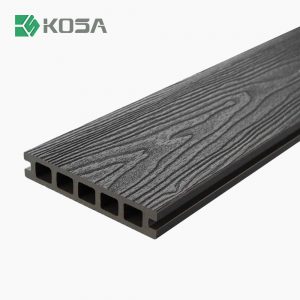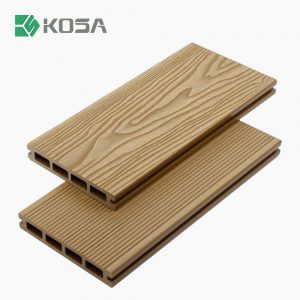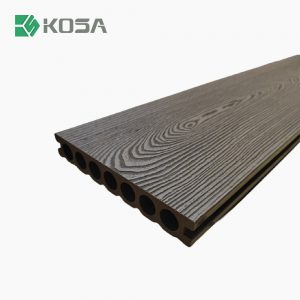
Wood plastic composites (WPC), as a new type of material that integrates wood fibers and plastics, have been widely used in various fields such as architecture, furniture, and landscaping due to their unique physical properties, processing performance, and environmental characteristics. However, in practical applications, wood plastic composites are often subjected to microbial erosion, such as decaying fungi, fungi, etc., which can lead to a decrease in their performance and shorten their service life. Therefore, the study of the biological durability of wood plastic composite materials is particularly important.
In recent years, with the continuous expansion of the wood-plastic composite material market and the broadening of application fields, its biodurability research has gradually attracted the attention of scientific researchers. Many scholars at home and abroad have conducted in-depth discussions on the biological durability of wood-plastic composite materials through experimental research, theoretical analysis and other means. This article will focus on the current research status of biodurability of wood-plastic composite materials, with a view to providing useful reference for related research and applications.
- Overview of biological durability
Biological durability refers to the ability of a material to resist erosion and degradation by microorganisms, insects and other organisms in a biological environment and maintain its performance and service life. For wood-plastic composite materials, because they contain wood fiber components, they are easily corroded by microorganisms such as decaying fungi and mold, resulting in reduced material performance and shortened service life. Therefore, improving the biodurability of wood-plastic composite materials is of great significance for extending their service life and broadening their application fields.

- Current status of biodurability research
In recent years, with the continuous expansion of the application of wood-plastic composite materials, research on their biodurability has gradually become a hot topic. Researchers continue to improve the biodurability of wood-plastic composite materials by improving formulas, optimizing processes, and adding antibacterial agents.
In terms of formulation, researchers adjusted the proportion of wood fiber and plastic matrix and optimized the type and dosage of additives to improve the material’s resistance to microbial erosion. For example, some studies have shown that adding an appropriate amount of antibacterial agents can effectively inhibit the growth of decay fungi and mold and improve the biological durability of wood-plastic composite materials.
In terms of technology, researchers have improved the density and stability of materials by improving mixing, molding, solidification and other process steps to reduce the erosion space of microorganisms. At the same time, some researchers also use surface treatment technologies, such as spraying antibacterial coatings, nano-modification, etc., to further improve the biodurability of wood-plastic composite materials.
In addition, researchers also evaluated the biodurability of wood-plastic composite materials by simulating microbial erosion experiments in natural environments. These experiments can not only reveal the performance changes of materials in biological environments, but also provide experimental basis for optimizing formulas and processes.
- Future development trends
Although research on the biodurability of wood-plastic composites has made some progress, there are still many challenges and problems that need to be solved. In the future, researchers can conduct in-depth research from the following aspects:
Optimize the formula and process: Through in-depth research on the interaction between wood fiber and plastic matrix, the synergistic effect of additives, etc., we will further optimize the formula and process of wood-plastic composite materials. At the same time, new molding technologies and post-processing methods can be explored to improve the density and stability of the material.
Develop new antibacterial agents: Finding antibacterial agents with efficient, environmentally friendly, and long-lasting antibacterial properties is the key to improving the biodurability of wood-plastic composite materials. In the future, researchers can focus on the research and application of new antibacterial materials such as bio-based antibacterial agents and nano-antibacterial agents.
Strengthen research on durability evaluation methods: Establishing a more accurate and reliable biological durability evaluation method will help comprehensively evaluate the biological durability of wood-plastic composite materials. In the future, researchers can focus on the standardization and standardization of microbial erosion experiments, as well as the development and application of new evaluation technologies.
Expanding application areas: As the biodurability of wood-plastic composite materials continues to improve, its application areas will also be further expanded. In the future, we can focus on the application research of wood-plastic composite materials in outdoor furniture, garden landscapes, transportation facilities and other fields to meet the demand for high-performance, environmentally friendly materials in more fields.
In summary, research on the biodurability of wood-plastic composites is an important and challenging field. Through continuous in-depth research and exploration, we can provide more reliable and effective technical support for the practical application of wood-plastic composite materials, and promote their widespread use in more fields.





